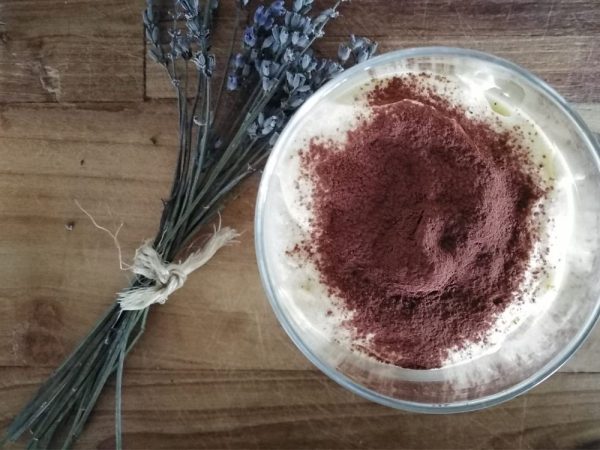Chances are that if you’ve been at Mandali, you’ve had the pleasure of savouring some of the delicious, heart warming dishes lovingly prepared by Chef Viramo. A coming together of traditional Italian recipes, wholesome vegetarian stews, fresh crispy salads and of course, his unforgettable Tiramisu, his cooking is a part of the essence of what Mandali is all about. Viramo has been with us since our conception, and in this interview he shares parts of his story, delicious culinary secrets, and a delightful spring recipe.
How did you end up as a chef in the retreat space?
When I started cooking at the age of 18, I began by assisting others to understand different types of foods. This was in my own village, working at my family’s restaurant in the Venetia region of Italy. Later, at the age of 22, I moved to London, and worked as a helper cook in a vegetarian restaurant. It was during that time that I also became familiar with the Osho center, which is the reason I traveled there.
My encounter with the spiritual world happened casually during a solo holiday in Sardinia. One morning, I woke up on the beach with a sense of timelessness and met a peaceful German guy. He mentioned meeting a guru in India, which fascinated me.
When I moved to London, after working in a vegetarian restaurant for a while, I joined the Osho community and from the very beginning, I loved it. It was a wave of new people, new friends, a new way of life. It was a happy time, away from my village in Venetia where not much was happening. Joining the commune felt like a big exodus from my small life revolving around my family business and the restaurant.
Since I was the only Italian there, the woman leading the commune assumed I must be a good cook so I started to share my skills. It’s funny how things work out like that, right? So I started cooking for 200 people every day, constantly learning along the way.
As I developed my spiritual practice and remained connected to the community, I chose to work exclusively in retreat centers and seminar houses. This allowed me to easily find a job and create a fully vegetarian kitchen wherever I went, and I also really like to cook like that, to have enough time to make fresh dishes for everyone to share. In a ‘normal’ restaurant, where each dish is plated, the food is not made with the same energy, the same freshness. Lots of things are pre-cut and prepared to put together quickly, and I prefer to cook in a more simple, family style way.
What’s the story behind your famously delicious tiramisu at Mandali? Everyone talks about it.
Tiramisu comes from a popular family recipe in the region of Venice, and the first restaurant that started serving it on their menu in the 1960’s was in our town. My uncle got the recipe from a cook there, and so we began serving it at our restaurant. The word spread as my uncle was well connected, and soon chefs from Milan were coming over to ask for the recipe. My mother was even a little skeptical at first to include it in the menu as it seemed like more of a family dessert, made with cookies, not something for a restaurant, but look what happened! Soon even people getting married started ordering it from us as their wedding cake.
Do you still make it that same way, and do you love it?

Yes, with Lady Finger cookies dipped in coffee, mascarpone mixed with sugar and egg whites and Masala liquor, topped with chocolate powder. It’s very simple in the end. I loved tiramisu as a kid and still do!
Your food has a distinct feeling, a sense of home. What’s the secret behind it? Do you follow a specific cooking philosophy like Ayurveda or macrobiotics?
Initially, in my early 20s, I followed a strict vegetarian diet for a long time. However, I eventually developed allergies and intolerances to certain foods, which is when I got into macrobiotics, and this changed the way I related to food.
Now I don’t strictly follow any particular diet or school. I incorporate a bit of everything in my own way. First and foremost, I don’t like being strict about anything. Coming from Italy, where food is highly regarded and diverse in every region, I didn’t want to abandon that aspect in my vegetarian cooking. So I adopted a bit of macrobiotics to provide a framework.
What exactly is macrobiotics? Is it a specific way of eating?
Yes, macrobiotics is a philosophy of eating that extends to a way of being. It originates from Japan and is based on the belief that we are what we eat. According to macrobiotics, if we consume healthy food in a balanced manner, we should remain healthy. The body doesn’t appreciate heavy, overly filling meals that require excessive digestion. Macrobiotics taught me to find a balanced approach to eating. For example, having around 30% grains, 30% vegetables, 20% protein, and 20% salads or fruits in each meal. It’s important to have a bit of everything. Grains serve as a foundational fuel, but balance is key. Vegetables and protein should always be part of every meal. Macrobiotics also emphasizes not overcooking vegetables.
Furthermore, a crucial aspect is the importance of chewing food thoroughly. Digestion actually begins in the mouth with saliva breaking down the food. Eastern cultures are known for their extensive chewing habits. By chewing food properly, you eat in moderation and feel satisfied earlier. It’s essential to perceive eating as a blessing, a ritual that nourishes and keeps us alive. Chewing extensively allows the organs to absorb all the minerals and vitamins
Can you walk me through a dish that you’re particularly fond of creating for yourself or others?
My favorite dish to make for myself is brown rice with veggies and seaweed, and also soups, all kinds of soups. I like to keep it simple.
Depending on my mood, sometimes I fry a mix of fresh onions and veggies and add them to the rice. Sometimes I prefer to cook everything together, the rice and vegetables at the same time, but not too long, so it doesn’t get mushy. Brown rice takes 45 minutes to cook, so I add the veggies when there are 20 minutes left. The onions and carrots give a delicious simple and natural flavor.
I also love cooking Indian dishes, like Daal, which is a traditional lentil soup with spices and ghee, and fresh raw salads. (Viramo has generously shared his Fennel and Orange salad recipe at the end of this blog, and our mouths are already watering, especially if you’ve tasted it in Mandali.)
Is there a connection between your spirituality and your food? Do you feel like there’s an intersection?
Yes, definitely! When you’re cooking, it’s a process that requires you to be fully present in the moment. It’s about following your intuition and being highly attentive. You must ensure that things don’t burn or overcook because you’re preparing food for others. It’s more than just someone buying a book or a piece of jewelry; it becomes a part of them when they consume your food. It’s an intimate and crucial point to consider. Therefore, it’s important to remain relaxed and centered while cooking, rather than simply being relaxed. In a restaurant setting, where individuals have different preferences, the kitchen can become chaotic. It can be challenging to infuse the food with a lot of energy in such situations. Everything needs to be done quickly and becomes automatic.
What I’ve noticed here is that when I’m cooking for a large group of people, let’s say 40 or 50, I have ample time to organize, cook, and prepare. I can even ask for help if needed. The food is prepared on the same day, at that very moment, and is immediately consumed. Almost 99% of the food is freshly made. There’s no storing it on the side for days and letting people take it later. It’s all prepared and consumed at the same time.
This approach gives a more holistic and spiritual perspective to the restaurant experience. It’s like cooking for your family, expressing love through food.
This way, you’re more relaxed, allowing people to take as much as they want. You can suggest moderation, advising them not to overindulge but to come back if they’re still hungry, promoting balance. People tend to eat a lot when they find something they like or want to mix different items together.
Sometimes, we even do meditation or simply stop for a moment in the kitchen. I yell “stop,”, or ring a bell, and everyone freezes for one minute, and then continue, just to bring everyone back to the present moment. You can feel the lightness in the kitchen almost immediately.
Lastly, what’s your recipe for a fulfilling life?
My recipe for a fulfilling life? I haven’t found it yet. 🙂 I can imagine what it can be, but I have experienced moments and days of fulfillment. At the foundation, I would place meditation, simply being. That’s what makes things go in a different, more natural way. Just meditation, any practice. It helps solve all the knots, all the problems somehow. It disentangles.
And of course, you need to share with others. You need to be open to sharing your feelings. It’s not spontaneous with people, especially if you work in normal restaurants. It’s impossible to relate this way with people. That is one of the main reasons I chose to work in retreat centers, I have found my way through many different connections in the spiritual world, always meeting loving people and opportunities where I can share my food.
Fennel and Orange Salad

Ingredients: 3 fresh fennel bulbs, 3 blood oranges, 1 tablespoon of pine nuts, 3 tablespoons of toasted pumpkin seeds, 2 tablespoons of pitted Taggiasca olives, 1 bunch of chopped parsley, juice of 1/2 lemon, extra virgin olive oil, salt, and pepper. Optional: Fresh parmesan flakes, grenadine seeds
Method: Take the fennel bulbs and, after washing and trimming them, removing a slice from the bottom and the green stalks, stand them upright. Cut each bulb in half from top to bottom, starting from the widest part. Then, with the flat side on the cutting board, slice it as thinly as possible. As you cut it, drizzle it with lemon juice to prevent it from turning dark and oxidizing.
Peel the oranges, removing the skin from each segment. Alternatively, simply cut each segment in half.
Next, mix all the ingredients together and season with salt, pepper, lemon juice, and extra virgin olive oil.
Garnish the salad with sprigs of parsley, the optional grenadine seeds and parmesan flakes
Enjoy your fennel and orange salad!



